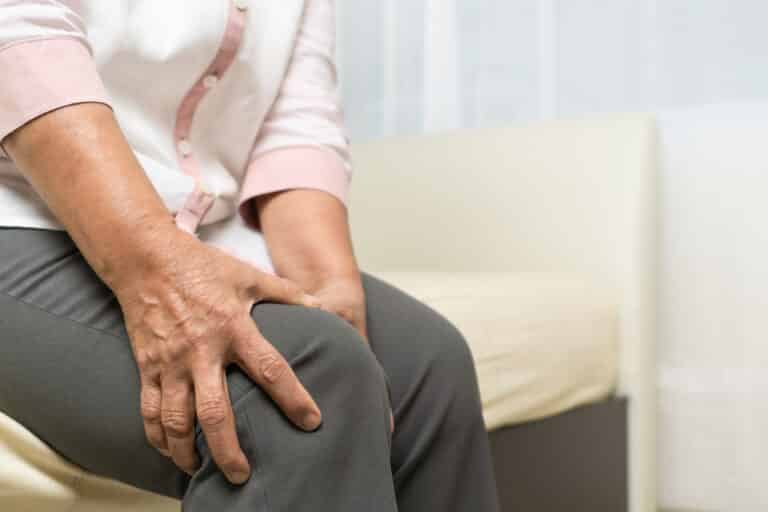The knees just so happen to be the largest joints in your body. As a result, they clearly play a crucial role in your mobility. It should come as no surprise to you that our knees are vulnerable to wear and tear over the years. As Johns Hopkins Medicine informs us, daily activities like walking, bending, standing and lifting contribute to this wear and tear.
“Athletes who run or play sports that involve jumping or quick pivoting are also more likely to experience knee pain and problems,” notes their website. Not surprisingly, the older we get, the more susceptible we are to knee pain. What are the most common causes of knee pain in seniors?
Osteoarthritis.
Osteoarthritis is recognized as the leading cause of knee pain in older adults. This degenerative joint disease occurs when the cartilage that cushions the bones in the knee joint wears down over time. As a result, the bones may rub against each other, causing pain, swelling and stiffness. The risk of developing osteoarthritis increases with age. It can be exacerbated by factors such as obesity, joint injuries or a family history of the condition.
“Rheumatoid arthritis can also affect the knees by causing the joint to become inflamed and by destroying the knee cartilage,” explains Johns Hopkins Medicine, “Rheumatoid arthritis often affects persons at an earlier age than osteoarthritis.”
Meniscus tears.
The meniscus is a wedge-shaped cartilage in the knee that acts as a shock absorber. Over time, the meniscus can weaken and become more prone to tearing, especially with sudden twisting or heavy lifting. Meniscus tears can result in sharp knee pain, swelling and difficulty moving the joint.
Washington’s Orthopedic Physician Associates warns us not to assume that only recent trauma to the knee could present an issue. “It is also possible that an old injury could still cause knee pain in older age,” imparts their website, “Although an injury that you may have sustained when you were younger appears to have healed, the damaged tissues are more vulnerable to instability, strain, and degeneration as we age.”
Tendinitis.
Tendinitis is the inflammation of a tendon, which connects muscles to bones. In the knee, the patellar tendon is commonly affected. Tendinitis can result from overuse, repetitive movements or injuries. Elderly individuals may experience tendinitis due to ongoing physical activities or strain.
“Inflammation of the tendons may result from overuse of a tendon during certain activities such as running, jumping, or cycling,” Johns Hopkins Medicine alerts, “Tendonitis of the patellar tendon is called jumper’s knee. This often occurs with sports, such as basketball, where the force of hitting the ground after a jump strains the tendon.”
Bursitis.
Small fluid-filled sacs called “bursae” cushion the knee joint. They reduce friction between the bones, tendons and muscles. When these bursae become inflamed due to repetitive stress, injury or infection, it can lead to pain, swelling and limited mobility.
Is your knee pain preventing you from climbing the stairs in your home?
If so, it may be time to invest in a stair lift! Stair lifts are designed to provide safe and easy access to all levels of a home. To learn all about the stair lifts offered by LifeCare Mobility Solutions, please don’t hesitate to call us at 416-267-9800 or email us at info@lifecaremobility.ca. You may also contact us by filling out the form on our Contact page!











1 thought on “What Are The Most Common Causes Of Knee Pain In The Elderly?”
“I always find exactly what I need in your content. ?”